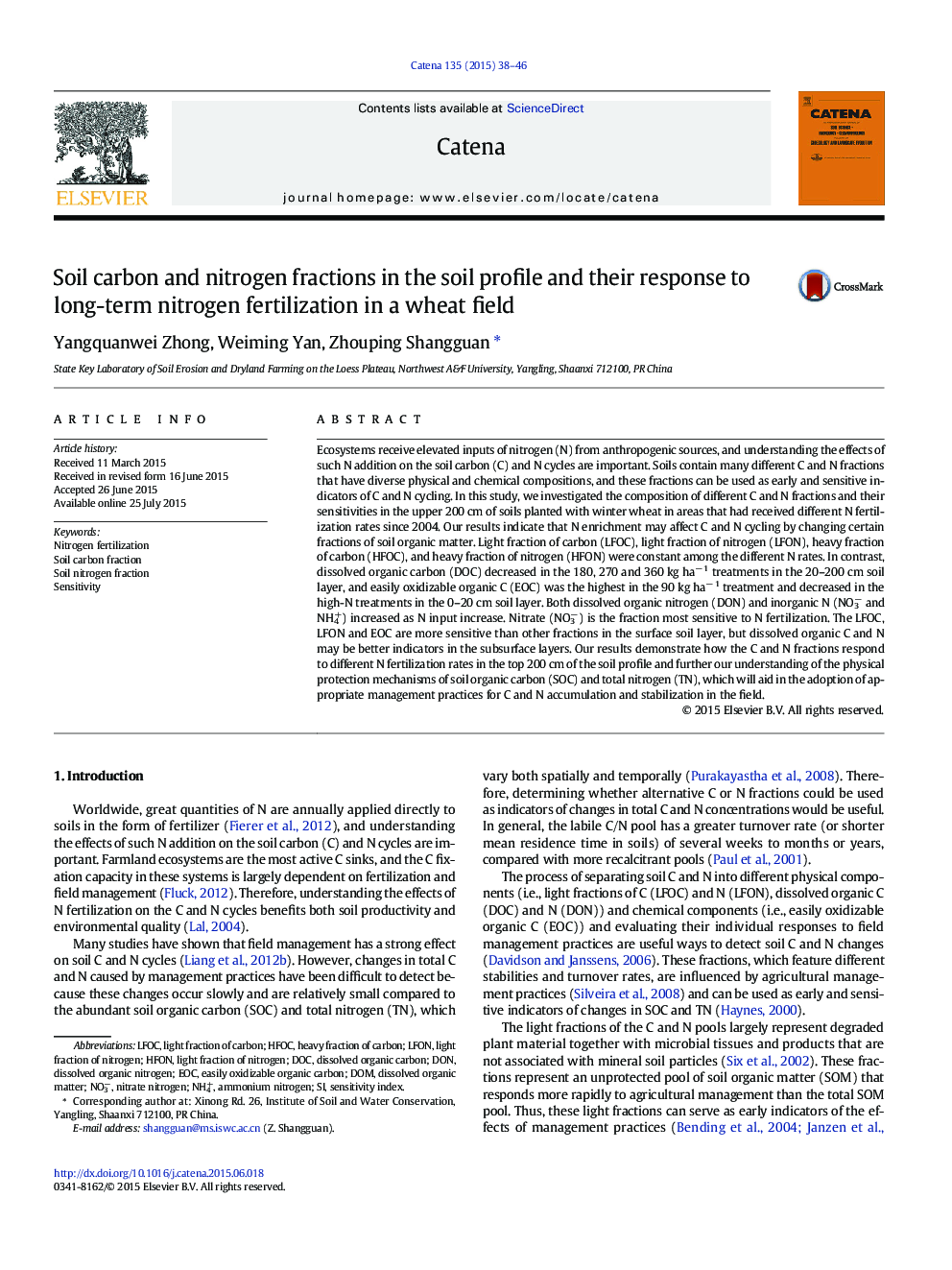| Article ID | Journal | Published Year | Pages | File Type |
|---|---|---|---|---|
| 4571076 | CATENA | 2015 | 9 Pages |
•Different C and N fractions in 0–200 cm soil were investigated.•C and N fractions varied under different N fertilization rates.•Nitrate was the most sensitive fraction to N fertilization.•The LFOC and LFON are more sensitive in the surface soil layer.•DOC and DON may be better indicators in the subsurface layers.
Ecosystems receive elevated inputs of nitrogen (N) from anthropogenic sources, and understanding the effects of such N addition on the soil carbon (C) and N cycles are important. Soils contain many different C and N fractions that have diverse physical and chemical compositions, and these fractions can be used as early and sensitive indicators of C and N cycling. In this study, we investigated the composition of different C and N fractions and their sensitivities in the upper 200 cm of soils planted with winter wheat in areas that had received different N fertilization rates since 2004. Our results indicate that N enrichment may affect C and N cycling by changing certain fractions of soil organic matter. Light fraction of carbon (LFOC), light fraction of nitrogen (LFON), heavy fraction of carbon (HFOC), and heavy fraction of nitrogen (HFON) were constant among the different N rates. In contrast, dissolved organic carbon (DOC) decreased in the 180, 270 and 360 kg ha− 1 treatments in the 20–200 cm soil layer, and easily oxidizable organic C (EOC) was the highest in the 90 kg ha− 1 treatment and decreased in the high-N treatments in the 0–20 cm soil layer. Both dissolved organic nitrogen (DON) and inorganic N (NO3− and NH4+) increased as N input increase. Nitrate (NO3−) is the fraction most sensitive to N fertilization. The LFOC, LFON and EOC are more sensitive than other fractions in the surface soil layer, but dissolved organic C and N may be better indicators in the subsurface layers. Our results demonstrate how the C and N fractions respond to different N fertilization rates in the top 200 cm of the soil profile and further our understanding of the physical protection mechanisms of soil organic carbon (SOC) and total nitrogen (TN), which will aid in the adoption of appropriate management practices for C and N accumulation and stabilization in the field.
